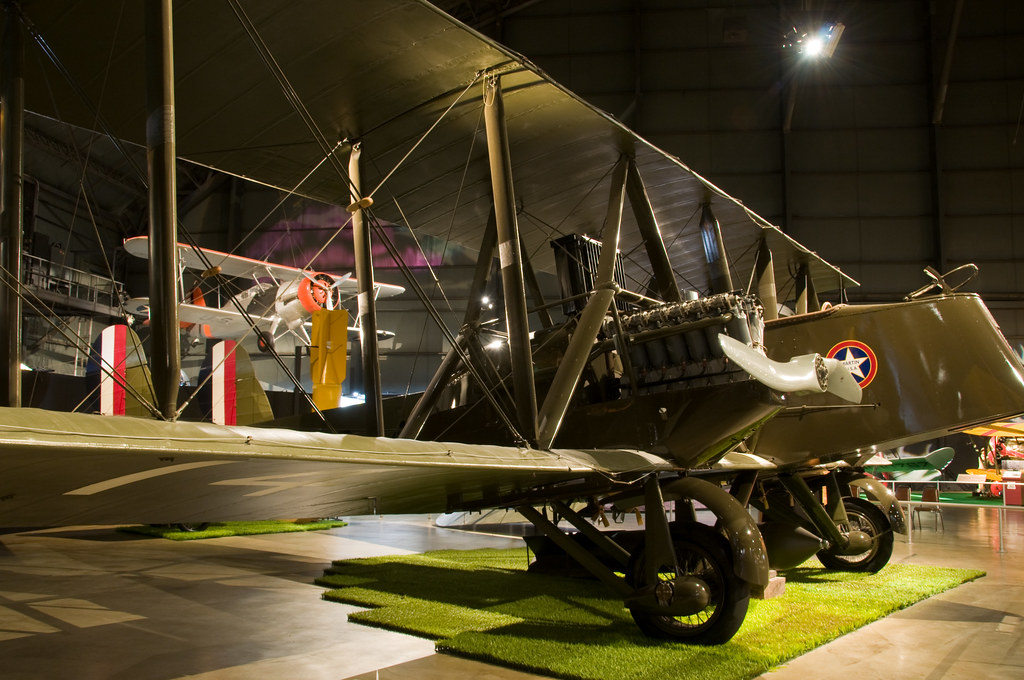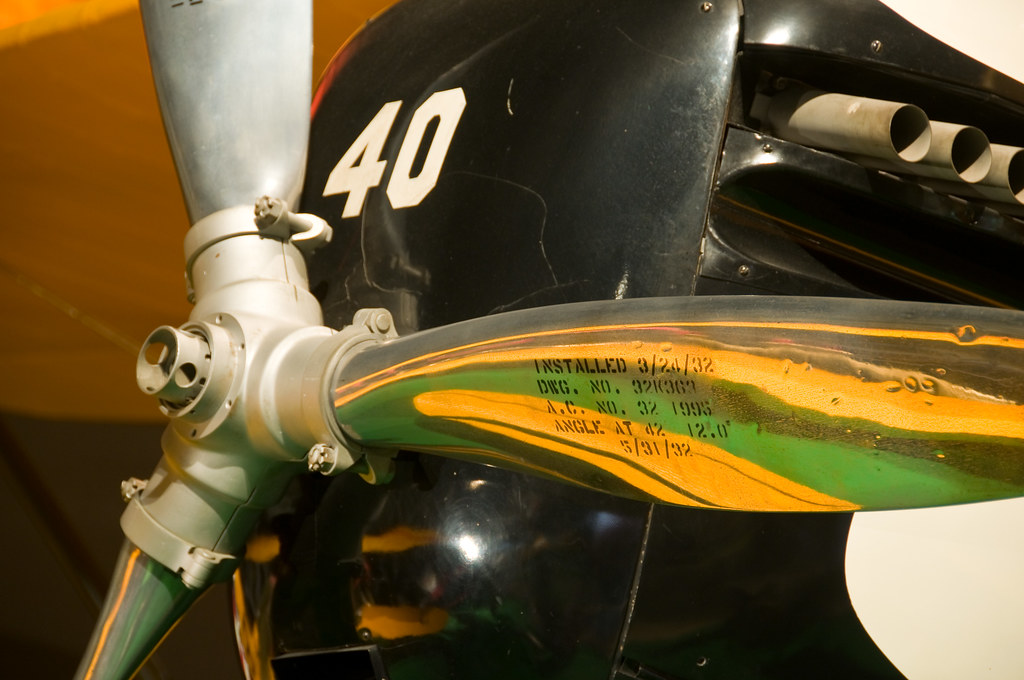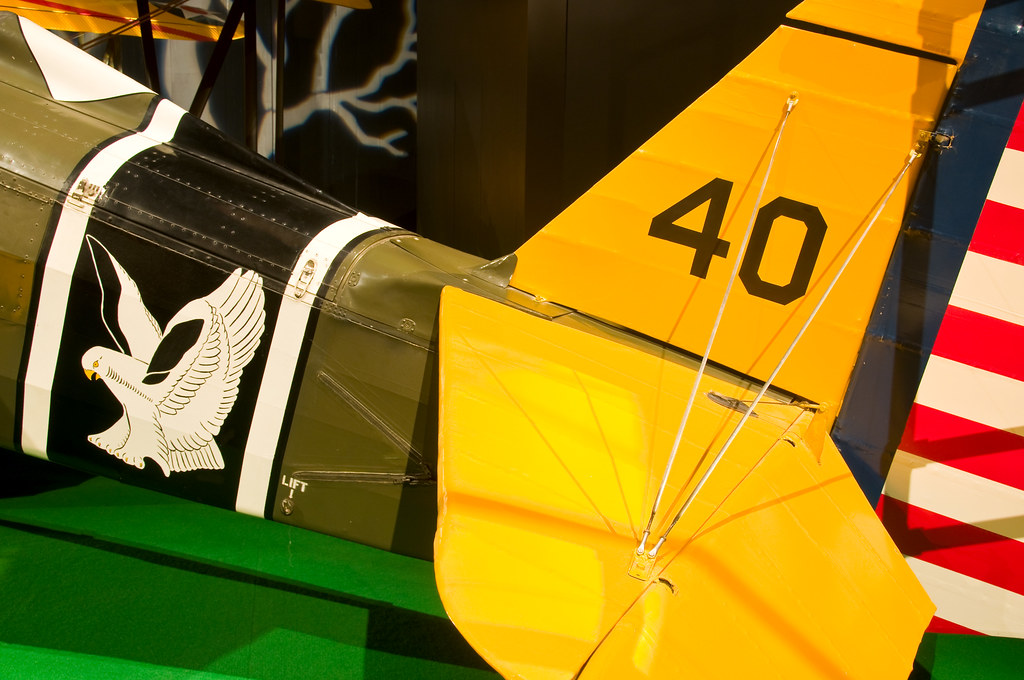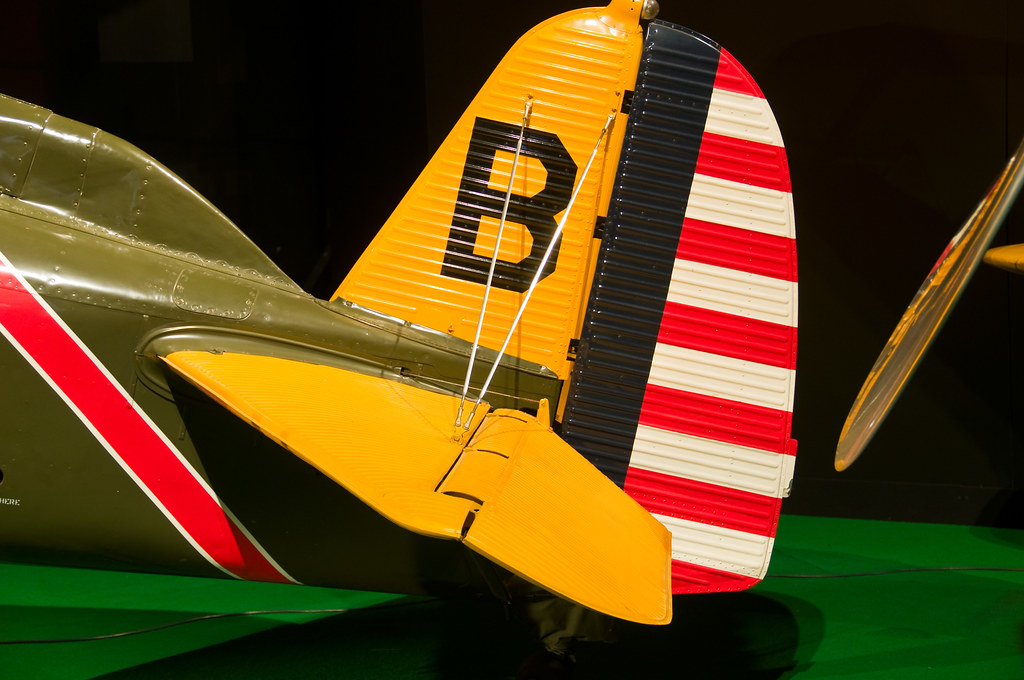
Martin MB-2 with the Douglas O-38F in the background
The Martin MB-2 was the first U.S.-designed bomber produced in large numbers. First ordered in June 1920, it replaced the handful of British Handley-Page O-400 and Italian Caproni bombers produced in the United States under license during World War I. Derived from the MB-1 (or GMB) and designed as a night bomber, the MB-2 sacrificed speed and maneuverability to carry a heavy bomb load. Although more capable than the aircraft it replaced, the MB-2s design reflected conventional features of the time, such as an internal wood structure and fabric covering. It also used the same Liberty engines as previous U.S. Army Air Service bombers. While the Glenn L. Martin Co. designed the aircraft, it built only the first 20 MB-2s. Under its contracting system, the Army Air Service purchased the design and assigned production to the lowest bidders, which were Curtiss (50 aircraft); Lowe, Willard and Fowler (35); and Aeromarine (25). At the same time, the Army Air Service changed the Martin designation to NBS-1 for Night Bomber Short range. The MB-2 became the Air Service's primary multi-engine bomber until replaced by the Keystone bombers of the late 1920s. The Martin MB-2 designers incorporated an interesting element -- folding wings. Since its large wingspan would have made it difficult to store in a hangar, the aircraft had hinges and notches cut out to allow the wings to be swung from just outside of the engine nacelles.
During World War I, observation aircraft provided ground commanders with vital reconnaissance information, and throughout the interwar years, commanders of U.S. Army ground forces demanded adequate observation support. However, most ground commanders anticipated fighting a static or slow-moving war, and the observation aircraft purchased during the 1920s and early 1930s differed little from those flown over France in 1918. The Douglas O-38F concluded a series of biplane observation aircraft begun in the early 1920s. Between 1931-1934, Douglas built 156 O-38s for the Air Corps, eight of which were O-38Fs. Despite being one of the Army Air Corps' best known and most versatile airplanes during the 1930s, the O-38 has been overshadowed by the more sensational exploits of fighters and bombers. With a cruising speed of only 128 mph, it was obsolete by the end of the 1930s, but some O-38s remained in service at the time of Pearl Harbor in 1941. One of the first military aircraft assigned to Alaska, the O-38F on display at the museum was the first airplane to land at Ladd Field near Fairbanks, Alaska, in October 1940. Originally a cold-weather test station, Ladd Field became famous during World War II as the place from where American-built aircraft flew to the Soviet Union under the Lend-Lease program. This aircraft flew various missions until it crashed on June 16, 1941, due to engine failure about 70 miles southeast of Fairbanks. Uninjured, the pilot, Lt. Milton H. Ashkins, and his mechanic, Sgt. R.A. Roberts, hiked to safety after supplies were dropped to them. The abandoned aircraft remained in the Alaskan wilderness until the museum arranged for its recovery by helicopter in June 1968. Despite being exposed to the Alaskan weather for 27 years, the aircraft remained in remarkable condition. Only the wings required extensive restoration.


Curtiss P-6E Hawk
Starting in 1925 with the P-1, Curtiss built a long series of fighters carrying the name "Hawk." Of the eight different P-6 models produced, the P-6E remains the best known. Originally designated the Y1P-22, the U.S. Army Air Corps redesignated this aircraft the P-6E because of its similarity to the other P-6s. Curtiss delivered 46 P-6E Hawks, the last biplane fighter built in quantity for the Air Corps. Never used in combat, the P-6E is recognized as one of the most beautiful aircraft of the 1930s.


Boeing P-12E in the background. The airplane in the foreground (to its right) is the beautiful Curtiss P-6E Hawk,
Developed by the Boeing Aircraft Co. at its own expense, the P-12 was became one of the most successful American fighters produced between the World Wars. Flown by both the Army and the Navy (as the F4B), the P-12 series consisted of an initial version and five additional models, B through F. The early versions used fabric-covered fuselages of bolted aluminum tubing, but the P-12E and F fuselages employed an all-metal, semimonocoque (stressed skin) construction. However, the P-12 did not complete the evolution into an all-metal aircraft because all variants had wooden wings with fabric covering. The U.S. Army Air Corps received its first P-12 in February 1929 and the last P-12F in May 1932. The last of the biplane fighters flown by the Army, some P-12s remained in service until 1941. Boeing produced 366 P-12s for the Army, with more P-12Es built (110) than any other series. The P-12E on display served with the 6th Pursuit Squadron in Hawaii during the 1930s, and the Army retired it in 1940.

No comments:
Post a Comment